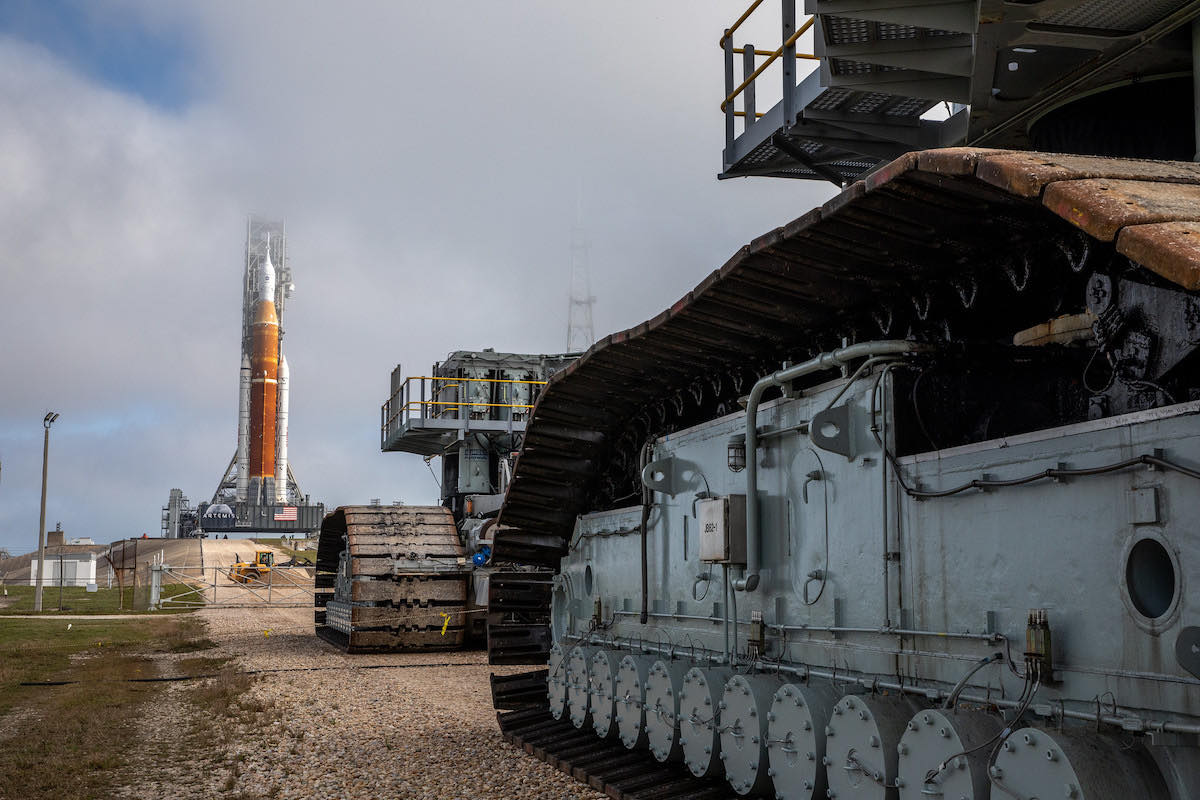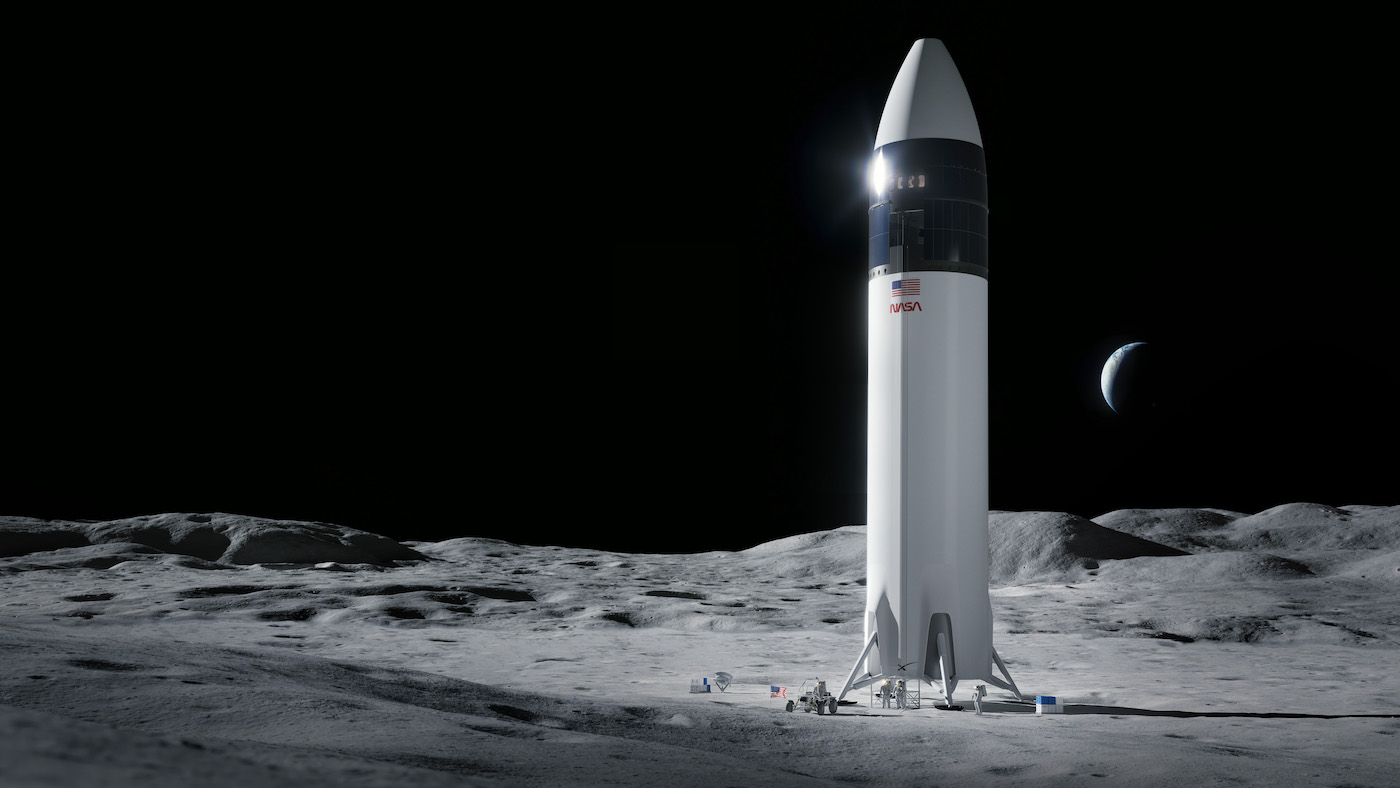
The White House’s fiscal year 2023 budget request for NASA totals $26 billion, including $7.5 billion for the agency’s Artemis moon program, a boost over this year’s budget to help pay for development of a second human-rated lander to ferry astronauts to the lunar surface.
NASA officials announced last week they plan to fund development of a second lunar lander to go alongside SpaceX’s Starship vehicle, which the agency selected last year for the Artemis program’s first moon landing attempt.
Bill Nelson, NASA’s administrator, said the budget request is “a signal of support of our missions and a new era of exploration and discovery.”
The $26 billion topline figure in the Biden administration’s fiscal year 2023 budget request is nearly $2 billion more than NASA is getting in fiscal year 2022 in a bill Congress passed and President Biden signed earlier in March, five months after the start of the government fiscal year.
“It’s an investment in the business and the corporations and the universities that all partner with NASA in all 50 states, and, by the way, good paying jobs that they created,” Nelson said.
Through the Artemis program, NASA aims to land astronauts on the moon no earlier than 2025. NASA plans to follow that mission with a series of more ambitious, more lengthy lunar expeditions, including flights to assemble and operate a mini-space station near the moon called the Gateway.
“Soon, we’re going back to the moon as Artemis,” Nelson said Monday. “We’re going to learn to live and work in a hostile environment, and then it’s on to Mars in the late 2030s. President Biden’s $26 billion proposed budget for NASA will begin to make this happen.”
The budget proposal now goes to Congress, whch is responsible for writing NASA’s budget each year.
The nearly $7.5 billion for the Artemis program in the White House budget request includes about $1.5 billion for human-rated lunar lander development work.
The lander program is a linchpin in the Artemis effort. The giant moon rocket for the Artemis program, the Space Launch System, is nearly ready for its first test flight, named Artemis 1. The Orion spacecraft designed to ferry astronauts between the Earth and lunar orbit make its first trip into deep space on the Artemis 1 mission.
A follow-on mission in 2024, named Artemis 2, will carry four astronauts around the moon and back to Earth.

The Artemis 3 mission will include the program’s first lunar landing attempt. An Orion spacecraft will link up with SpaceX’s Starship landing vehicle in orbit around the moon, then the Starship will transport the crew to the moon’s surface. The commercial rocket will then launch the astronauts back into space to rendezvous with the Orion spacecraft for the return trip to Earth.
NASA awarded SpaceX a $2.9 billion contract last April to develop a lunar lander version of its Starship rocket, a reusable launch system to eventually replace SpaceX’s Falcon rocket family and Dragon spaceships. The Starship lander stands more than 160 feet (about 50 meters) tall, and crews will ride an elevator from the ship’s cabin to the lunar surface.
Under SpaceX’s original contract, called “Option A” by NASA, the company will develop the Starship lander and perform two lunar landing test flights, one without astronauts and one with a crew on the Artemis 3 mission.
NASA wanted to choose more than one lunar lander provider last year, but officials said the budget passed by Congress didn’t provide enough funding to pay two companies. NASA selected SpaceX, which proposed the least expensive lander option, over proposals from Dynetics and an industrial team led by Blue Origin, Jeff Bezos’s space company.
Blue Origin and Dynetics protested NASA’s selection of SpaceX, but the Government Accountability Office upheld NASA’s decision. Blue Origin then filed a lawsuit on the matter, but a federal judge ruled against Bezos’s company in November.
Last week, NASA officials said the agency will open another round of procurement for the Artemis lunar lander program and provide federal funds to support development of a second lander option.
“Under this new plan, this Sustaining Lunar Development opportunity, NASA is asking American companies to propose lander concepts capable of transporting astronauts to and from lunar orbit to the surface of the moon for missions beyond the third Artemis,” Nelson said March 23.
NASA wants the second lander option to provide more capability for Artemis landing missions after Artemis 3. On those flights, NASA wants to deliver more cargo to the moon — such as rovers and habitats — and have astronauts stay on the surface for longer periods.
In parallel with the Sustaining Lunar Development lander procurement, NASA plans to negotiate a new deal with SpaceX — called “Option B” — to augment its Starship lander for missions after the Artemis 3 landing demonstration. That will give SpaceX funding for a third Starship landing mission, and rights to compete with the new entrant for Artemis landings later in the 2020s and into the 2030s.
The Sustaining Lunar Development procurement will be open to all U.S. companies except SpaceX, which will come into the new phase of the lander program as an incumbent.

The $1.5 billion for the Artemis lander program in fiscal year 2023 will go toward SpaceX’s existing contract and kick-start development of the follow-on landers.
The fiscal year 2023 budget request also includes nearly $2.6 billion for the Space Launch System, more than $1.3 billion for the Orion spacecraft program, and $750 million for ground systems work at the Kennedy Space Center.
The funding proposal also has $779 million for the Gateway lunar space station and $275 million for development of new lunar spacesuits and rovers to transport astronauts across the moon’s surface.
NASA’s space operations would get nearly $4.7 billion in the budget request, including more than $3 billion for operations and crew and cargo transportation in support of the International Space Station. Another $224 million would go toward funding contracts with space companies to work on their designs for commercial space stations to eventually replace the ISS.
The funding plan would provide $1.4 billion for NASA’s space technology mission directorate.
NASA’s science mission directorate is another big winner in the 2023 budget proposal. The science division would receive $8 billion next year, including nearly $3.2 billion for planetary science, funding missions like the Europa Clipper spacecraft to explore one of Jupiter’s icy moons and the robotic Mars Sample Return program to bring rocks from the Red Planet back to Earth.
The Earth science division would get $2.4 billion in fiscal year 2023, supporting development of a series of Earth System Observatory satellites to study and monitor Earth’s climate, water, and atmosphere.
The astrophysics division’s budget line includes more than $1.5 billion to pay for operations of the James Webb Space Telescope and the Hubble Space Telescope, plus development of new missions like the Nancy Grace Roman Space Telescope.
NASA’s heliophysics programs would receive $760 million in the Biden administration’s budget proposal.
Email the author.
Follow Stephen Clark on Twitter: @StephenClark1.
